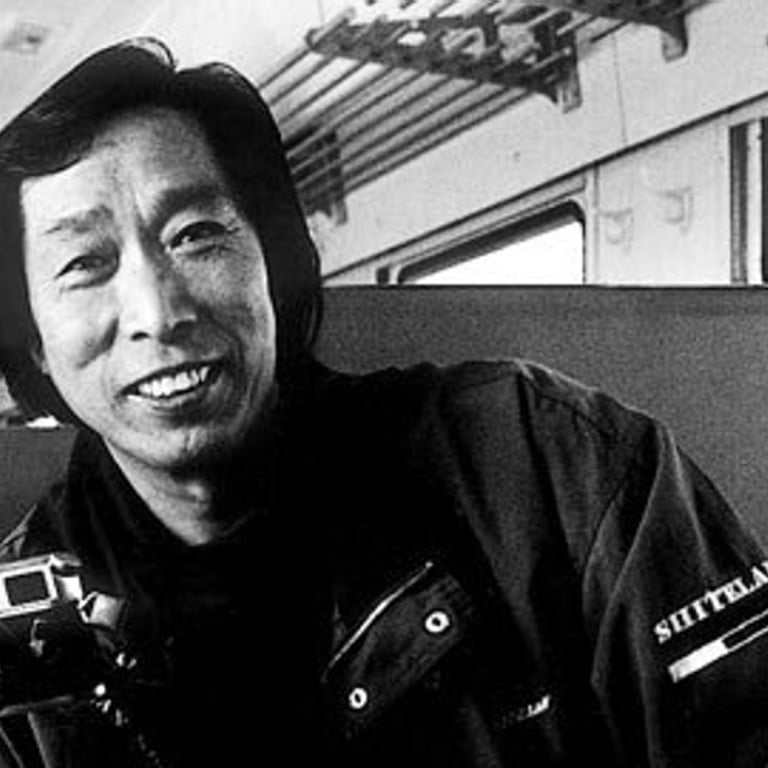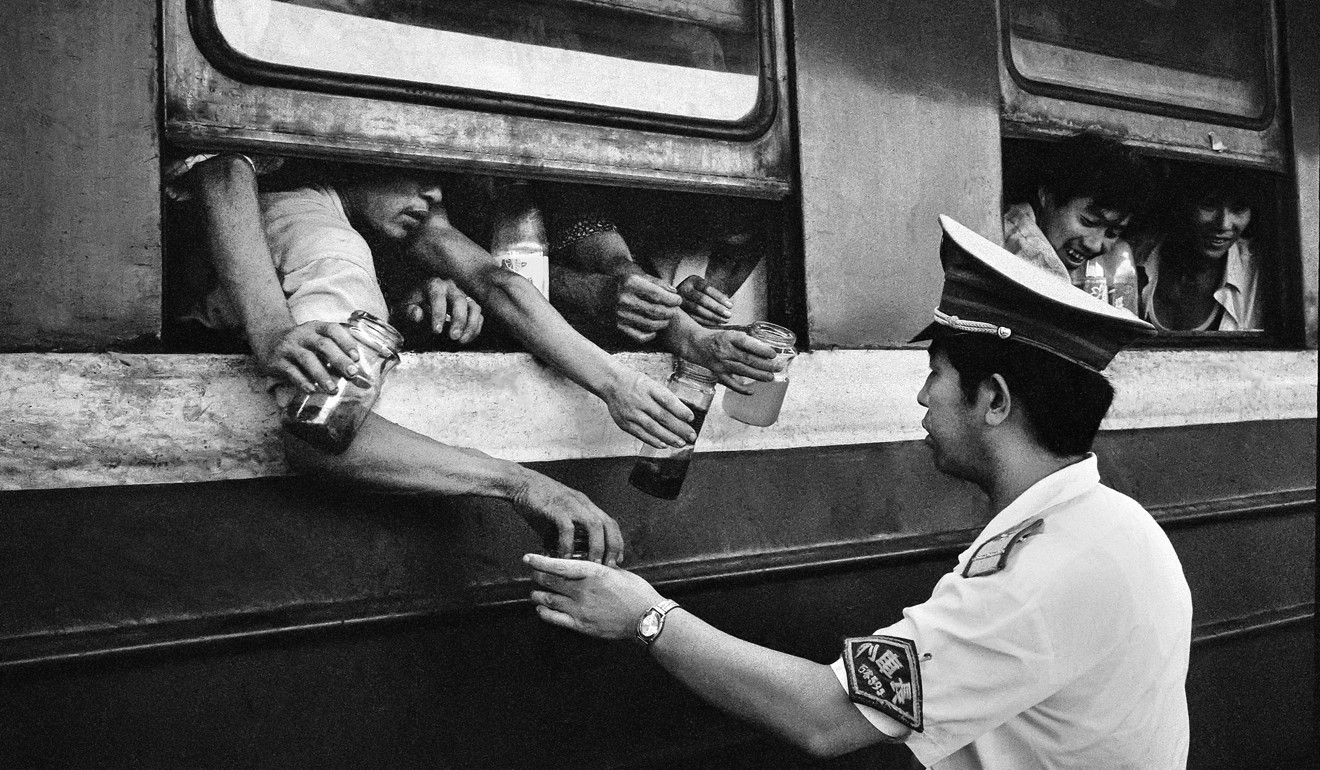
Chinese on trains: photographer Wang Fuchun captures a nation’s progress over 40 years
Candid portraits of travellers on China’s railways expose how breakneck economic development transformed lives since reform in the 1970s to the present day
“Photography isn’t complicated,” Wang Fuchun says, when we meet in Xidan, a swarming shopping district in central Beijing. “Basically, you look for what inspires you and take a picture. It’s all about the act. Nothing technical, nothing complicated.”
I follow the tall, long-haired septuagenarian through the crowds of Saturday shoppers. He picks his targets quickly, snapping a courting couple, a vagrant asleep on a bench, a child holding a balloon and crying.
Capturing the wry: Shenzhen photographer’s take on modern China
“It’s all about looking,” Wang says, gesturing to his eye and grinning like a small boy occupied with his favourite toy. “Most days, when I get home, I have thousands of photos to edit. I drive my family mad.”
Wang’s inclination to document human life means he seldom shoots landscapes. A combination of street-photographer fearlessness and natural charm has made him a formidable presence in the world of Chinese photography.
Collections such as “The People of Northeast China” and “Northeast Tiger” have garnered critical praise at photography festivals in China, but it is Wang’s signature series, “Chinese on the Train”, that has proved his most enduring work, captivating critics and gallery-goers for four decades.
The series, which documents travellers on China’s railways from 1978, was first collected in book form in 2001, and to mark the 40th anniversary of his work, a new edition has been released this year, prompting Wang to look back at his own journey, which began humbly, in a frosty corner of Japanese-controlled Manchukuo.
I was born in Heilongjiang province in 1943,” he says. “When I was young, I was interested in art. I always drew and painted.”
Wang’s association with the railway also began early on. He was raised by an elder brother and his wife, who worked for the railway administration.
“Our house was near the rail line,” the photographer recalls. “I watched trains go by every day and listened to the noises they made. We were pretty poor back then. During the harvest season, I’d hop on trains and go to the fields to collect grains that had not been harvested. My love for trains has continued since then. As soon as I get on one, I feel at home.”
In 1963, at the age of 20, Wang enrolled in a vocational railway college, and spent two years studying all aspects of the railway, from maintenance to driving, intending to become an engineman. A stint in the military postponed his railway career until 1970, when he was assigned the job of carriage inspector.
However, Wang’s artistic talents soon won him work as a graphic designer for the railway bureau in Sankeshu, a town in Heilongjiang, and, in 1977, he was tasked with photographing trains on behalf of his work unit.

Wang did not then regard photography as art, however, and it was not until he attended a documentary photography exhibition in Harbin, in 1980, that the lights went on.
“After that show, my twin-lens Seagull camera never left my side,” he says. “I photographed everything. I soon had the idea that people on trains would be interesting subject matter and began photographing them, at first secretly, though nowadays nobody minds being photographed.”
Wang’s vocation as railwayman bound him to the iron road on a continual passage from point A to point B and back again. For many, this unchanging commute might have dulled the senses, but he focused on the “mobile societies” inside the trains, documenting China’s dramatic evolution through people’s attire, possessions and habits, their relationships and interactions. “I’ve captured the era of reform and opening up in its entirety,” Wang says.
On one page in the new book, a large print from 1994 shows an aspiring yuppie talking into a brick-sized mobile phone on the Shenyang-to-Dalian line. Flick ahead to 2013 and there’s a girl watching the in-train entertainment system in the first-class carriage of the high-speed Beijing-to-Shanghai service.
As the railway has changed, so too has the country. The destiny of one is bound up in the destiny of the other. Throughout the book, you see people’s standard of living improve, slowly at first, then faster until it reaches the speed of a high-speed train
“As the railway has changed, so too has the country,” Wang says of the project, which began when steam locomotives dominated China’s network. “The destiny of one is bound up in the destiny of the other. Throughout the book, you see people’s standard of living improve, slowly at first, then faster until it reaches the speed of a high-speed train.”
Like a Chekhov play, the action typically happens offstage in Wang’s work. What remains in the frame are people occupied by their own micro-dramas: a baby crying; a man losing at cards; passengers simply sitting and thinking. Are they travelling home for a wedding or a funeral?
Such scenes, while undoubtedly Chinese, are also universal, and Wang has accompanied his photos to galleries overseas.
“I’ve had exhibitions in the UK, Denmark, France, Russia – all over the world,” he says. “I’ve been to so many places, I can hardly remember them all.”

And while he usually flies to international exhibitions, “after the meet and greet, I try to find time to take a train somewhere”, he says.
One international festival to which Wang does ride the rails is that held annually in Pingyao, in Shanxi province, where he has exhibited a number of times, and hopes to again.
“I’m 75 years old now,” Wang says, “so hopefully I’ve got another 10 good years left photographing Chinese on trains. I’m not done with this story just yet.”

